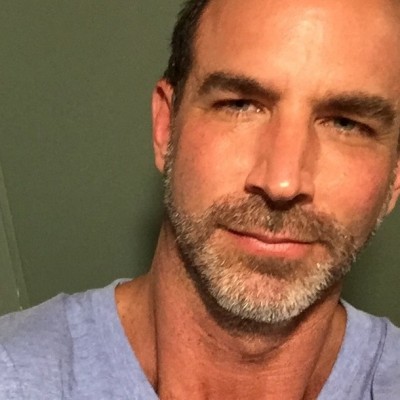As the executive director and cofounder of Prevention Access Campaign (PAC), Bruce Richman focuses on getting the word out about the benefits of HIV treatment not only for people living with the virus but also for their sexual partners—specifically, he’s focused on the ways that meds can prevent the spread of HIV.
To further his activism, Richman has launched a POZ Blog. Check out his inaugural post, “Loud and Clear: Undetectable = Uninfectious,” to learn how feelings of fear and anxiety about his HIV diagnosis gave way to a sense of freedom once he realized that having an undetectable viral load meant he wasn’t a danger to his partner.
While we were setting up the blog, POZ reported on findings from the PARTNER study, which further supports HIV treatment as prevention (TasP). Richman voiced his concerns about the article and the cautionary tone of the study’s accompanying editorial and press release, which he felt should have been more celebratory. As we discussed the challenges of explaining and interpreting study results about HIV transmission risk, we both realized it was an important conversation worth sharing.
Below is part of our email exchange, edited for clarity and length.
Bruce, thanks for talking about the PARTNER trial results, which were presented at the 21st International AIDS Conference (AIDS 2016), held in Durban, South Africa. The study followed straight and gay couples in which one person has HIV and the other partner doesn’t. It found no HIV transmissions between couples in which the person with HIV had an undetectable viral load. Our story about the study was headlined “Published Interim PARTNER Findings Stress Power of HIV Meds to Prevent Transmission.” I agree that we could have been more specific. Perhaps something like, “Study Finds Zero HIV Infections From Undetectable Partners.” How does that grab you?
Thanks for being so open to feedback. Absolutely, that revised headline works. It highlights the significance of the findings. Going one step further, the study is specifically about the risk of condomless sex, so it may be more effective to say, “Study Finds Zero HIV Infections From Condomless Sex With Undetectable Partners.”
I think you can highlight what really matters about this study to people with HIV, their partners and their providers. For example, the article mentions the new analysis focused on 888 mixed-HIV-status couples, and a few paragraphs later it says that there were 22,000 incidents of condomless sex among the gay couples and 36,000 among the straight ones. Combining those numbers in some parts of the article would make it clearer that there were 58,000 condomless sex acts. That’s a significant number and may otherwise get overlooked if reporting the acts separately. And it’s important to emphasize the role of condomless sex in the study.
It’s a profound mental, cultural and social shift to acknowledge that people with HIV who are undetectable can have condomless sex with HIV-negative people without transmitting the virus.
I see your point on most of that. But in fact, in the PARTNER study, the accompanying editorial and press release include quotes such as, “Clinicians need to be clear that even though the overall risk for HIV transmission may be small, the risk is not zero and the actual number is not known, especially for higher-risk groups such as MSM [men who have sex with men].”
The editorial from the press release, which is not officially the study, is the least supported and most cautionary piece of information that accompanied the study.
Why do you think it takes that tone?
It’s no surprise that a study such as PARTNER that indicates that there is effectively zero or negligible risk from condomless sex between mixed-status couples will be met with significant pressure and pushback due to political, cultural and public health concerns. This will impact where and how soon it gets published, as well as how it is editorialized and reported. I work closely with Pietro Vernazza, MD, who is on the executive committee of PARTNER, the author of the Swiss Statement and on the board of PAC, who agreed to go on record about the issue:
The publication of this manuscript was delayed not by the author group but by an extremely hesitant editorial process with extremely long return times. It seemed to me that many editors and reviewers were hesitant to have this information published. This delay of the publication process might indicate that the reasons were not scientific, but political.
The cautionary words in the PARTNER press release and editorial such as “appears small,” “may be small” and “risk is not zero” greatly understate and minimize the significance of the study. Word choices like “negligible,” “effectively zero risk” or even “extremely small” would be more accurate and meaningful and have been used by other experts to describe this PARTNER’s result.
We could easily veer into a discussion over semantics and how people interpret specific words that convey risk—after all, there isn’t one agreed-upon measurement of risk—but I take it you believe the tone of the press release is intentionally cautionary?
Even when they agree with the force of evidence from real-world and clinical trial experience, medical and public health professionals have been reluctant to communicate the significance and meaning of it because of two primary concerns:
- An increase in condomless sex among people with HIV who are undetectable will lead to an increase in STIs; and
- People with HIV might not understand that staying on treatment is essential to maintain an undetectable viral load. For instance, they might interrupt treatment by personal choice or due to circumstances outside of their control and unknowingly experience an increase in viral load and risk of HIV transmission.
Many AIDS service organizations and community-based groups and medical providers selectively choose to discuss the science with patients and clients whom they judge are “responsible” (for example: monogamous and with a stable linkage to treatment) rather than directly address the impacts of risk compensation and disinhibition through education and access.
It’s my experience that researchers are loath to speak in absolutes. You won’t find them saying there is absolutely zero risk of getting HIV—even if no one contracts it in the study—because researchers think of outlying and perhaps unknown factors as well as long-term risk (longer than the period of the trial). How does this affect your ability to get your “undetectable = uninfectious” message out?
We don’t expect researchers to say absolutely zero risk, but some of the undisputable world leaders on the topic have said “negligible risk,” “uninfectious,” “not infectious,” “not contagious” and “effectively zero risk.” We’re pleased with all of those terms!
The Undetectable = Uninfectious movement has been building for quite some time. You’ll be hearing more about it from the Prevention Access Campaign and on my POZ Blog.
It’s a profound mental, cultural and social shift to acknowledge that people with HIV who are undetectable can have condomless sex with HIV-negative people without transmitting the virus. Getting to that point means rewiring 35 years of deeply entrenched fears of HIV and the people who have HIV and challenging the longstanding unproven assumption that condoms are always necessary to prevent HIV transmission. And the stigma and assumptions influence policies and practices even within the HIV prevention field.
There’s also the fear of being the first. At this point, only the Terrence Higgins Trust in the United Kingdom has said “Undetectable = Uninfectious” or “negligible risk.” None of the major HIV and federal public health agencies in the United States are even close to saying it. There’s a much greater level of comfort to continue to be cautionary and risk-averse and indicate there’s a smaller risk, but there’s still a risk. So, in a sense, people with HIV are still a grenade, a smaller grenade, but still a grenade. And, therefore, the misinformation and HIV stigma continue!

Bruce Richman cofounded the Prevention Access Campaign.
There was major progress in the United States last week: The pioneering Demetre Daskalakis, MD, MPH, assistant commissioner at the Bureau of HIV/AIDS Prevention and Control at New York City’s health department, became the first public official in the country to officially endorse “negligible risk” when he endorsed PAC’s Undetectable Primer/Consensus Statement along with other globally recognized experts on this topic from the United States, Australia, Switzerland and Denmark (including Myron Cohen, MD; Andrew Grulich, PhD; Jens Lundgren, MD, DMSc; and the aforementioned Vermazza). Many of PAC’s community partners will be shifting to similar messaging in the coming months.
Why is the PARTNER study so important to your messaging? Other studies such as the HPTN 052 study have also proved that treatment is prevention.
PARTNER is the largest study to include extensive data on both vaginal and anal sex without condoms. It also included anal sex among the heterosexual couples, not just the MSMs. Another critical finding in PARTNER is that having a sexually transmitted infection (STI) or likely viral blip did not affect risk, which is also a finding of the Canadian consensus statement in the context of criminal law—signed by more than 70 HIV specialists and the largest infectious disease association in Canada.
Our discussion brings up the differing roles of researchers, reporters and activists. Speaking for myself, I’m not comfortable telling a reader, “Hey, these results mean you have no risk and should harbor zero fears of HIV being transmitted from an undetectable person.” But I am comfortable including that perspective from a respectable source or trying to put the level of risk in a context the readers can better understand.
I feel the same way. Neither of us is in the position to make a judgment about another person’s comfort and level of acceptable risk. Prevention Access Campaign points to and aggregates the studies and builds consensus among the top researchers so people can make informed decisions as to what makes sense for them. And we can help point out certain studies, decisions or opinions that may not be driven by science but by other factors. A large part of our role is to investigate and break through the politics, stigma and phobias that interfere with free flow of information.
While this isn’t in the study, it’s important to point out a few things:
- Depending on the drugs employed it may take as long as six months for the viral load to become undetectable.
- Staying undetectable requires excellent adherence to treatment.
- Having an undetectable viral load prevents only HIV, not other STIs or pregnancy. Condoms protect against HIV as well as other STIs and pregnancy.
- Many people with HIV may not be in a position to reach undetectable because of various challenges related to access to treatment (for example, poor health care systems, poverty, denial, stigma, discrimination, criminalization) or antiretroviral toxicities, or they may not be ready or willing to start treatment. There are many barriers to testing, treatment and long-term adherence outside the control of people living with and vulnerable to HIV that must be addressed.
Finally, PARTNER is part of a substantial and growing body of real-world and clinical evidence that is proving that while HIV is not always transmitted even with a detectable viral load, when a person living with HIV is on meds and has an undetectable viral load, this both protects his or her own health and prevents new HIV infections.
For more about PAC, visit PreventionAccess.org, where you can also learn about its Undetectable = Uninfectious campaign. And you can read Bruce Richman’s inaugural POZ Blog here.







12 Comments
12 Comments